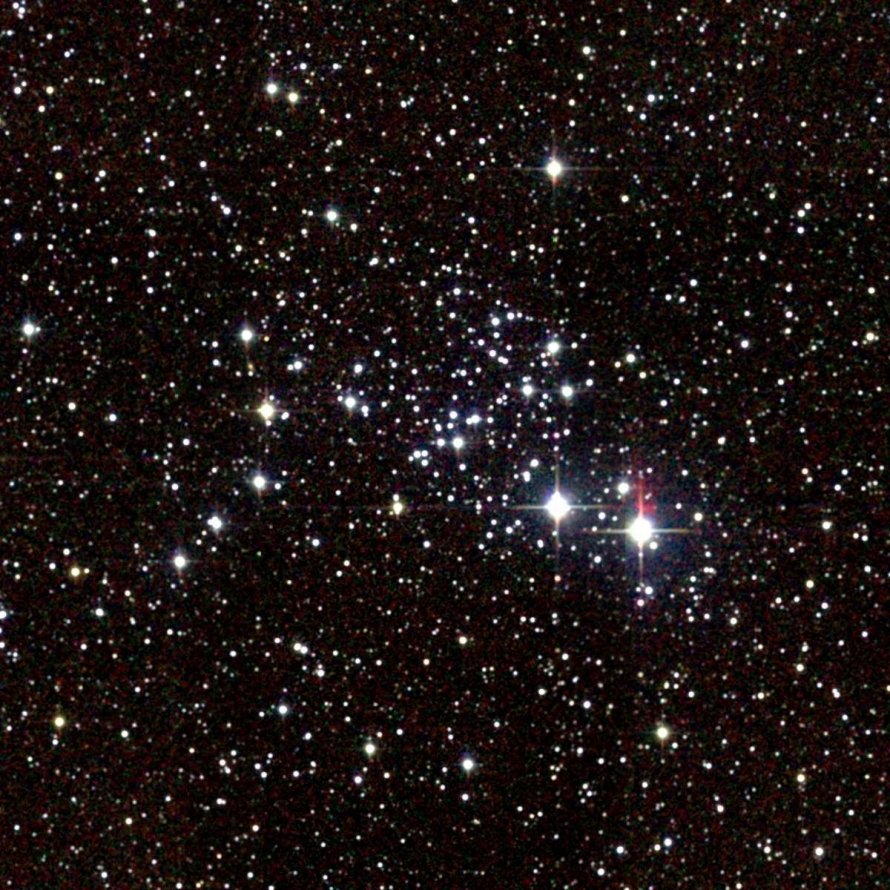M93 (NGC 2447)
Messier 93 (NGC 2447) is an open cluster located in the constellation Puppis, in the Orion Arm of the Milky Way Galaxy in the Local Group of galaxies. M93 is 3400 light years away from Earth.
M93 is best viewed during winter, is magnitude 6.2, and can be viewed with binoculars. M93 is 10' in apparent size. For reference, the full moon is 30'.
Observing difficulty: Intermediate
- Name:
- Type:
- open cluster
- Constellation:
- Puppis
- NGC or IC:
- NGC 2447
- Magnitude:
- 6.2
- Viewing:
- binoculars
- Size:
- 10'
- Distance (light years):
- 3400 LY
- RA:
- 7h 44.6m
- Dec:
- -23 52'
- Season:
- winter
- Milky Way location:
- Orion Arm
- Galaxy group:
- Local Group
- Messier Marathon #:
- 22
* The naked eye can see up to magnitude ~7-8 objects under ideal dark sky conditions.
A Detailed Examination of the Spectacular Open Cluster
Messier 93, also known as M93 or NGC 2447, is an open star cluster located in the southern constellation of Puppis. Discovered by Charles Messier in 1781, M93 is a relatively young cluster, its age estimated at about 100 million years. With its stellar density and diverse stellar population, M93 presents an appealing sight for skywatchers and offers ample opportunities for scientific investigation.
Characteristics of Messier 93
M93 is an open cluster, which means it comprises a loosely bound collection of stars that originated from the same molecular cloud. These stars share similar ages and elemental compositions, making open clusters like M93 invaluable for studying stellar evolution. The stars of M93 are spread over an area of roughly 22 to 25 light-years across. Among its most notable stars are a few yellow giants and several white dwarf stars, signifying the cluster's relatively young but evolved status.
Magnitude and Distance
Messier 93 has an apparent magnitude of 6.0, which, under optimal conditions, barely places it within the limit of visibility to the naked eye. However, with binoculars or a small telescope, M93 easily comes into view as a somewhat triangular patch of faint light. Its absolute magnitude, which indicates the intrinsic brightness of an object, is estimated to be -6.2. The cluster is approximately 3,600 light-years away from Earth.
Finding and Observing Messier 93
Messier 93 is located in the constellation Puppis, which is part of the larger constellation group known as the Argonauts. However, it's important to note that from many mid to far northern latitudes, M93 is difficult or even impossible to observe because it never rises high above the horizon.
For observers in suitable latitudes, M93 can be found by following a line southwards from Sirius, the brightest star in the sky, through the bright star M47. About 8 degrees further will bring you to M93. Since it is a relatively faint object, a clear, dark sky is necessary for optimal viewing.
When observed through a small telescope, M93 reveals a rich field of stars, with the brighter members forming a rough shape that some observers liken to a butterfly or an inverted letter 'A'. Higher magnifications with larger telescopes can resolve more stars and provide a better view of the cluster's structure.
M93, while not as well-known as some other Messier objects, is a celestial gem that offers a fascinating target for astronomers. Its rich stellar population and notable shape provide attractive viewing, while its relative proximity allows for in-depth scientific study.



